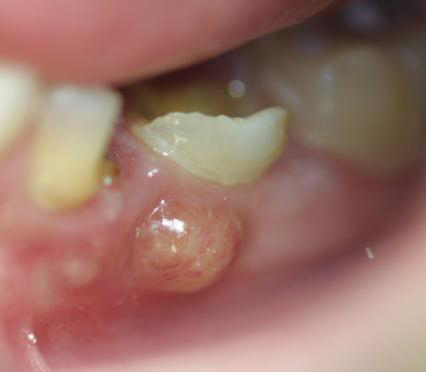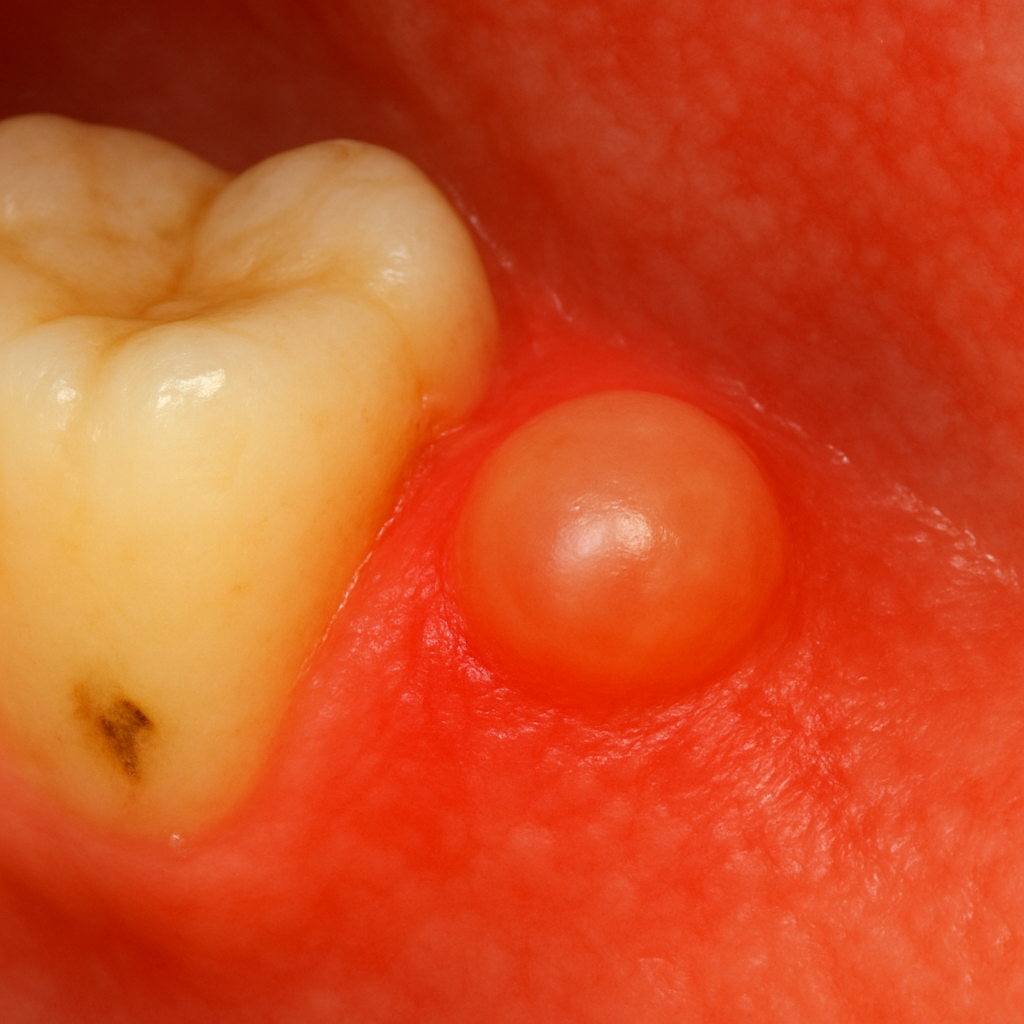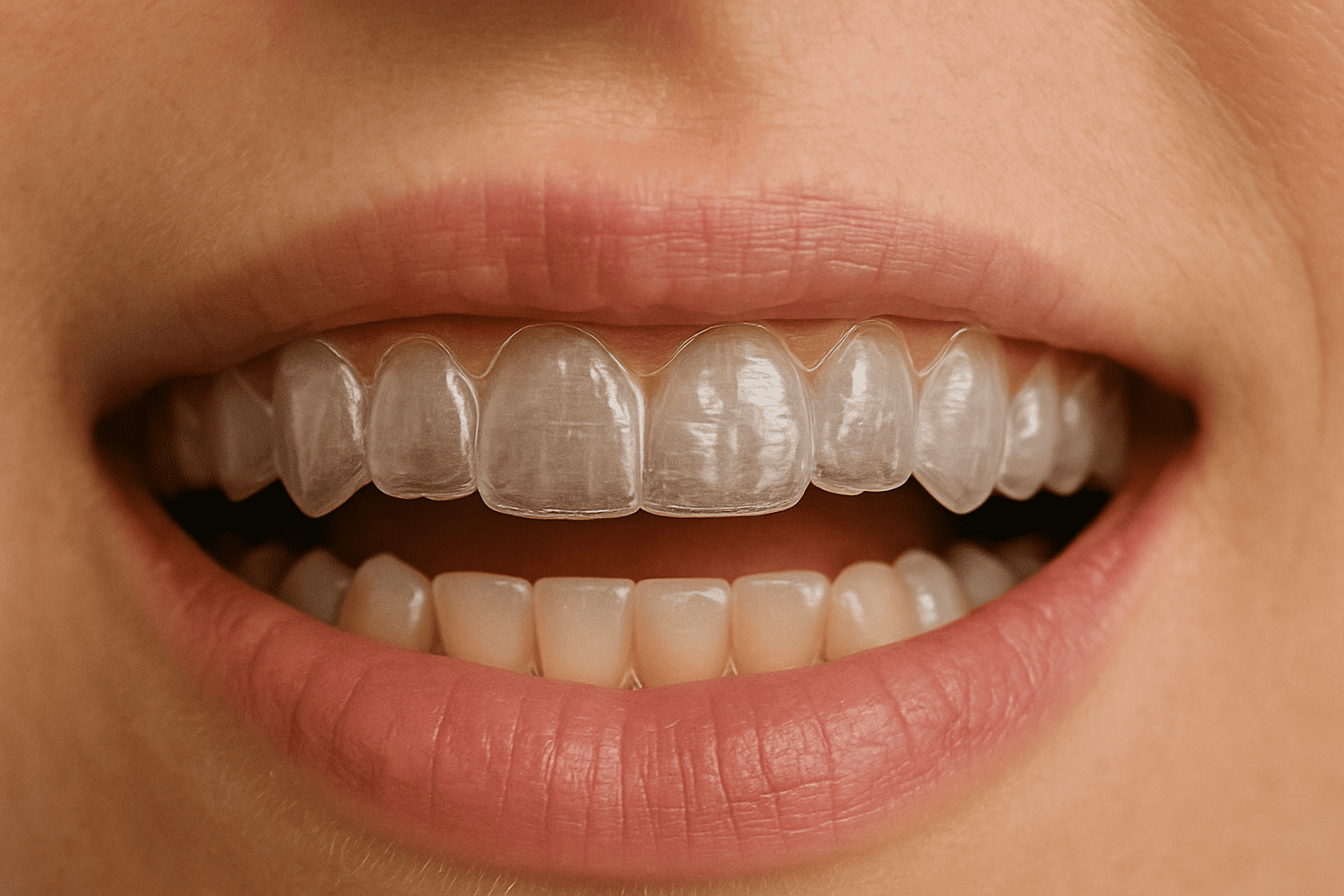Tooth Abscess: Causes, Symptoms, and Treatments
Throbbing toothache or swollen gums? We’ll explore what a tooth abscess is, its signs, causes, treatments, and tips to prevent this painful infection.
.jpeg)
Tooth Abscess: Causes, Symptoms, and Treatments
Imagine waking up with a throbbing toothache that makes every bite or sip unbearable, coupled with a swollen cheek and a strange taste in your mouth. This could be a tooth abscess, a painful dental infection where bacteria form a pocket of pus in or around your tooth or gums. If ignored, this condition can escalate, potentially spreading to your jaw or bloodstream, leading to serious complications.
In this post, we’ll guide you through what a tooth abscess is, why it happens, how to recognize it, effective treatments, and practical steps to prevent it, empowering you to take charge of your dental health with confidence.
What is a Tooth Abscess?
A tooth abscess is a localized dental infection where bacteria, often Streptococcus mutans, create a pocket of pus within the tooth, gums, or surrounding bone. This pus buildup typically affects the dental pulp (the tooth’s inner core of nerves and blood vessels) or the gum tissue. Without professional care from a dentist or endodontist, an abscess won’t heal on its own and can pose significant health risks. An abscess can develop quickly, sometimes within days, and can turn serious in as little as 48 hours if swelling blocks airways or the infection spreads, making swift action essential. The main types include:
- Periapical Abscess: Forms at the tip of the tooth’s root, usually due to untreated tooth decay (cavities) or trauma, allowing bacteria to invade the pulp.
- Periodontal Abscess: Develops in the gums or supporting bone next to a tooth, often linked to advanced gum disease.
- Gingival Abscess: Affects only the gum tissue, typically caused by bacterial buildup or the accumulation of debris, such as food particles.
- Pericoronitis: A less common infection in the gum flap over an unerupted tooth, such as wisdom teeth, is prone to bacterial buildup.
Visually, abscesses may appear as red, swollen bumps or “gum boils” (known as parulis) on the gums, sometimes feeling firm to the touch.

Causes of Tooth Abscesses
A tooth abscess stems from a bacterial infection, typically driven by Streptococcus mutans and other bacteria like Prevotella, which thrive in plaque and invade the dental pulp or gums. Several factors can trigger this infection, and certain individuals, such as those with poor oral hygiene, smokers (who are twice as likely to develop abscesses), or people with diabetes or weakened immune systems, are more vulnerable. Chronic teeth grinding or repeated dental trauma also heightens the risk. A high-sugar diet promotes tooth decay, while a balanced diet with minimal sweets helps keep bacteria in check. Common causes include:
- Poor Oral Hygiene: Skipping brushing or flossing allows plaque to build up, leading to tooth decay or gum disease.
- Untreated Cavities: Deep cavities let bacteria reach the pulp, triggering a periapical abscess.
- Dental Trauma: Cracks or chips in teeth create entry points for bacteria.
- Gum Disease: Periodontitis (advanced gum disease) forms gum pockets where bacteria accumulate.
- High-Sugar Diet: Sugary foods and drinks fuel bacterial growth, increasing tooth decay risk.
- Dry Mouth: Reduced saliva, often from medications or aging, makes teeth more prone to decay.
- Previous Dental Work: Damaged or poorly done crowns or leaking old fillings can harbor bacteria.
- Wisdom Teeth Impaction: Unerupted or impacted wisdom teeth can trap bacteria, causing pericoronitis.
Symptoms of a Tooth Abscess
A tooth abscess can cause intense discomfort that disrupts daily life, often signaling its presence with a combination of pain and visible signs. For those with chronic conditions like diabetes, abscesses may worsen existing health issues, such as heart disease, by allowing bacteria to enter the bloodstream, underscoring the need for prompt care. The infection can manifest in several ways, including:
- Severe Toothache: A throbbing pain that may radiate to the jaw, neck, or ear, often worsening when chewing or lying down, disrupting sleep.
- Sensitivity: Discomfort with hot, cold, or sweet foods and drinks.
- Swelling: Redness or swelling in the gums, face, or cheek, sometimes appearing as a “gum boil.”
- Foul Taste/Odor: Pus leakage causes a bad taste or smell in the mouth.
- Fever and Infection Symptoms: Feeling unwell or feverish, indicating the body is fighting the infection.
- Swollen Lymph Nodes: Tenderness under the jaw or neck.
- Loose Tooth: Common in periodontal abscesses.
- Difficulty Breathing/Swallowing: A medical emergency due to severe swelling.
If the abscess ruptures, you may experience temporary pain relief as foul-tasting fluid drains; however, the infection persists and requires further treatment.

Diagnosis
Diagnosing a tooth abscess involves a thorough evaluation by a dentist to pinpoint the infection and assess its severity, ensuring the right treatment plan. Individuals with compromised immunity, such as those with diabetes or undergoing chemotherapy, require aggressive treatment to prevent rapid infection spread, often involving close monitoring and tailored antibiotic regimens. The diagnostic process typically includes:
- Visual Examination: Inspecting for swelling, redness, or gum boils to identify visible signs of infection.
- Tapping/Thermal Tests: Gently tapping the tooth or applying hot/cold stimuli to check for sensitivity, indicating whether the dental pulp is affected.
- Dental X-rays: Revealing the abscess’s location and any bone loss to guide treatment.
- CT Scans: Used if the infection is suspected to have spread to the neck or sinuses, such as in cases causing sinus issues like nasal congestion.
Treatment Options
Treating a tooth abscess focuses on eliminating the infection, relieving pain and swelling, and saving the tooth when possible. If you suspect an abscess, rinse with warm saltwater, take a pain reliever if needed, and contact a dentist immediately, avoiding hot or cold foods to prevent worsening pain.
A tooth abscess won’t heal on its own; temporary relief from a rupture doesn’t clear the infection. Recovery typically takes 1–2 weeks after treatment, though some sensitivity may linger. Extraction is only necessary if the tooth is unsalvageable. Common treatments include:
- Abscess Drainage: An incision is made to release pus, sometimes with the placement of a temporary rubber drain to aid in healing.
- Root Canal Treatment: Removes infected dental pulp, cleans the root canals, and seals the tooth, with ceramic coverage afterwards for strength.
- Extraction (Tooth Removal): Removal of the tooth if the damage is too severe.
- Antibiotics: Prescribed occasionally for severe or spreading infections especially in immunocompromised individuals.
- Pain Management: Ibuprofen or paracetamol can help; combining both may be effective for adults if one isn’t enough (check dosing instructions). Warm saltwater rinses (1 tsp salt in 8 oz water) offer temporary relief.
For temporary home relief, stick to soft foods like yogurt or mashed potatoes to avoid painful chewing. Natural remedies lack evidence and shouldn’t replace professional care, as they can delay treatment and worsen the infection.
Don’t let a tooth abscess disrupt your life. See our root canal treatments and book an appointment today to get expert care and relief.
Prevention Strategies
Preventing a tooth abscess relies on consistent oral hygiene and smart lifestyle choices to reduce the risk of bacterial infections and tooth decay. If you’ve had an abscess before, maintaining excellent oral hygiene is critical, as poor habits or unresolved issues like periodontal disease can increase the likelihood of future infections. Key prevention steps include:
- Brush Twice Daily: Use fluoride toothpaste for at least two minutes to remove plaque and strengthen enamel.
- Clean between your teeth daily: Clean between teeth with use of floss and/or interdental brushes to prevent plaque buildup.
- Avoid Post-Brushing Mouthwash: Retain protective fluoride by not rinsing immediately after brushing.
- Limit Sugary Foods/Drinks: Reduce tooth decay risk by cutting back on sweets and sodas.
- Replace Toothbrushes: Change every 3 months or when bristles fray for effective cleaning.
- Schedule Dental Check-ups: Visit a dentist every 6 months for your routine examination.
- Quit Smoking: Smokers face double the risk of abscesses, so quitting is a powerful preventive step.
- Address Dental Injuries: Seek prompt care for chipped or cracked teeth to prevent bacterial entry.

When to Seek Emergency Care
Prompt action is critical for a tooth abscess to prevent worsening or complications. For symptoms like pain, swelling, or fever, contact a dentist as soon as possible. If you experience severe signs, such as difficulty breathing or swallowing, or intense fever and infection symptoms, head to the emergency room immediately, especially if a dentist isn’t available.
Complications if Untreated
An untreated tooth abscess can lead to serious health risks as the infection spreads beyond the tooth or gums. The infection may cause significant damage or escalate into life-threatening conditions, particularly for those with weakened immune systems. Potential complications include:
- Local Spread: Infection reaching the jaw, sinuses (causing issues such as nasal congestion), or neck, potentially leading to severe swelling, like Ludwig’s angina.
- Systemic Risks: Sepsis, a severe systemic infection, or rare conditions such as brain abscesses or heart inflammation.
- Airway Obstruction: Severe swelling that blocks airways, requiring emergency tracheostomy and carrying up to a 40% mortality risk in cases like mediastinitis.
- Tooth Loss/Jawbone Damage: Permanent loss of the tooth or weakened jawbone structure.
If swelling exceeds 1 cm, causes secretions you can’t manage, or makes breathing or swallowing difficult, seek emergency care immediately.
Psychological and Social Considerations
The intense pain and swelling from a tooth abscess can extend beyond physical discomfort, impacting mental and social well-being. Severe dental pain often leads to anxiety, disrupted sleep, and difficulty focusing, which can result in social withdrawal or missed work. Fear of dental procedures can also heighten stress. To address these challenges:
- Open Communication: Discuss fears with your dentist, who may offer sedation options to ease anxiety during treatment.
- Relaxation Techniques: Practice deep breathing or mindfulness to stay calm before and during dental visits.
- Seek Support: Consider therapy for dental phobia to build confidence and ensure timely care without added stress.
Conclusion
A tooth abscess is a serious dental infection caused by bacteria such as Streptococcus mutans, resulting in pain, swelling, fever, and potential complications if left untreated. Whether it’s a periapical, periodontal, or gingival abscess, timely treatment is vital to protect your health. Commit to excellent oral hygiene, cut back on sugary foods, and visit your dentist regularly to prevent dental infections (and diagnose any concerns early on). If you notice any symptoms, act quickly to safeguard your smile and overall well-being.






